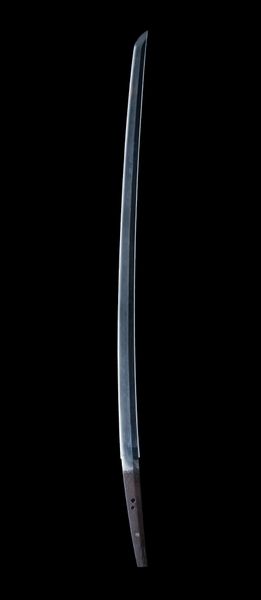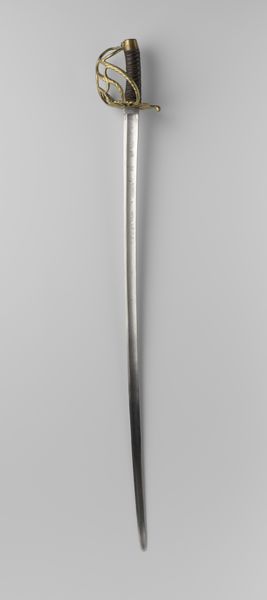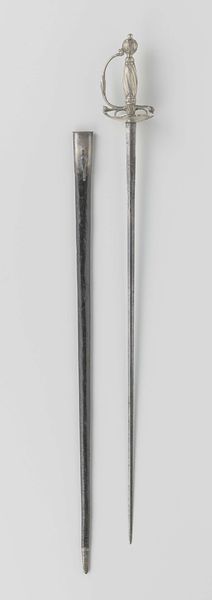
Blade and Mounting for a Short Sword (Wakizashi) 1601 - 1900
0:00
0:00
metal, sculpture
#
medieval
#
metal
#
asian-art
#
japan
#
sculptural image
#
form
#
sculpture
#
armor
#
sword
Dimensions: L. 19 in. (48.2 cm); L. of blade 16 11/16 in. (42.4 cm); L. of cutting edge 14 5/8 in. (37.1 cm); D. of curvature 1/16 in. (0.2 cm)
Copyright: Public Domain
Editor: Here we have a blade and mounting for a short sword, or wakizashi, crafted sometime between 1601 and 1900 by Yasutsugu. The metallic sheen gives it a refined, almost ethereal quality. How might we interpret this work through its symbolism? Curator: Indeed. The sword in Japanese culture, especially during the Edo period, wasn't merely a weapon. Its gleaming surface acted as a mirror reflecting Bushido values—honor, loyalty, self-control. The wakizashi, in particular, was often carried as a symbol of a samurai's social standing. Notice the absence of excessive ornamentation. Editor: Now that you mention it, the simplicity stands out. Curator: Exactly. It whispers of discipline. Can you feel how the streamlined form contrasts with more elaborate swords? Where do you think the visual and cultural emphasis lies? Editor: Perhaps the focus shifts to the wielder, their character and skill, rather than sheer display. Curator: Precisely. It reminds us of the Zen ideal of achieving perfection through economy of means. This isn’t just metal; it’s distilled purpose and embodies centuries of cultural memory. Does that give you a new perspective on it? Editor: It definitely does. I see it less as a static object, and more like a symbol charged with the weight of a whole philosophical tradition. Curator: And perhaps the story of the countless hands it has passed through. What stories could it tell? Editor: So many! From battlefield encounters to quiet moments of reflection… Thank you, I now understand the power of the sword to connect with history and beliefs.
Comments
No comments
Be the first to comment and join the conversation on the ultimate creative platform.













